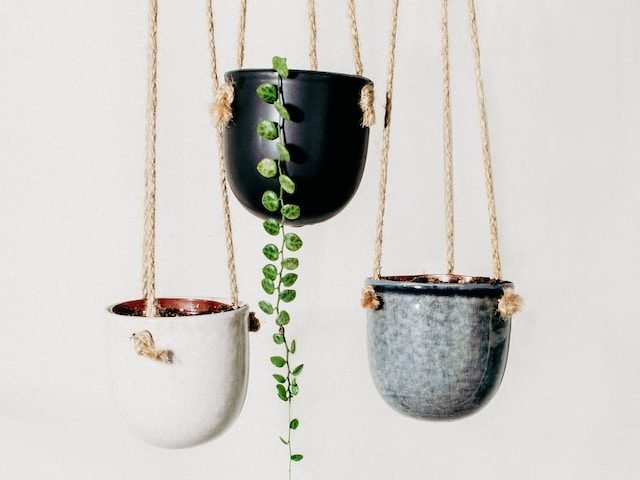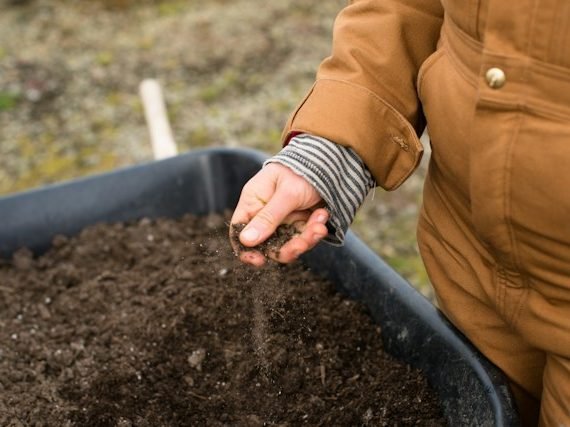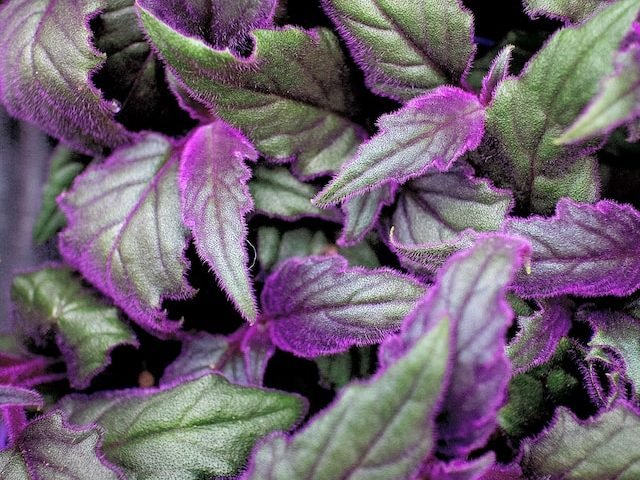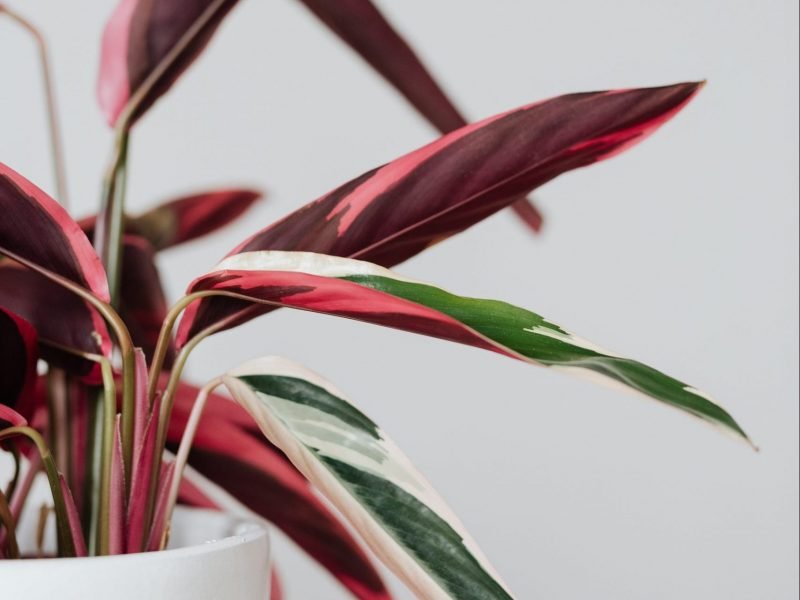
Whether it’s the incredible bird-like flowers or the luscious tropical leaves, there are so many reasons to fall in love with the Bird of Paradise plant. Although they are native to the tropics, this doesn’t mean they can’t thrive in your home if things are right.
If you notice that your Bird of Paradise has started to develop brown leaves, this is a sign that your plant is a little unhappy. But don’t fret, we will be going through the different reasons why Bird of Paradise plants develop brown leaves so you can figure out what is wrong with your plant and fix the issue before it’s too late.
We will also be giving tips on how to prevent brown leaves from developing again in future so you’ll want to keep these tips handy moving forward.
Causes of brown leaves on Bird of Paradise Plants
Consistent underwatering
If your Bird of Paradise has developed dry, crispy brown leaves it is often due to a lack of water. Although Bird of Paradises don’t like frequent watering and hate sitting in puddles of excess water, this doesn’t mean that they can survive for long periods of time with really dry soil. If you think you may have underwatered your Bird of Paradise, take your plant out of the pot and inspect the potting mix.
It’s important to inspect the health of the root system at this stage as well to see if there is any damage so you know how long the issue has been going on. If there are any dead roots, trim them away so your Bird of Paradise can start to grow healthier ones.
Lack of Humidity
If the edges and leaf tips of your Bird of Paradise are turning brown, then dry air may be the culprit. During winter, our homes can be especially dry as the heating is on and the windows are closed so it’s something we need to be more conscious of during that time.
Although we could never reach tropical levels of humidity in our home (as it would be really uncomfortable to live in), there are a few things we can do to help raise the humidity and stop any more brown leaf tips on our Bird of Paradise plants. You’ll find these detailed further down the article.
Chemical Sensitivity
Over time a build-up of excess fertiliser, chlorine or fluoride from tap water can cause issues for your plant and your Bird of Paradise plant’s leaves might start turning brown or black as a result.
There are two really simple ways to fix this. The first is to run water through the pot for a little while to flush out all of the chemical buildups. You’ll want to either do this outside on the lawn or in the bathtub so that excess water can escape through the drainage holes.
If that doesn’t seem to fix the problem you can always re-pot with fresh soil and this will solve the issue very quickly. When doing this, make sure to remove as much of the old potting mix from the roots without damaging them. A good way to do this is by rinsing down the root system before adding in the fresh soil.
Temperature extremes
Make sure that you draft proof any windows/ doors that are close to your Bird of Paradise (and other tropical or heat-loving houseplants) as well as moving them away from any air conditioning vents as these can be quite damaging to your plants during summer and cause brown leaves pretty quickly.
Using a digital thermometer is an easy way to monitor the temperature in your home and allow you to check for any cold drafts.
If your Bird of Paradise is in quite a cool room, this can also increase the risk of overwatering and root rot (which can cause a whole range of problems such as brown leaves).
Your Bird of Paradise won’t need as much water as the soil will take a lot longer to dry out in cooler temperatures. This can be the perfect place for root rot and leaf rot to occur so be extra cautious when it comes to caring for your Bird of Paradise in winter or in colder rooms in your home.
Warm temperatures and hotspots can also commonly occur next to windows that receive direct sunlight and this can also dry out your Bird of Paradise and cause brown leaves.
Using a temperature monitor can also help you avoid this extreme (they really are a lifesaver). It’s also important to make sure your Bird of Paradise is at least 1 meter away from radiators, stoves and heating vents.
Not enough sunlight
Although Bird of Paradise plants can grow in a variety of light conditions (note that you won’t see many flowers in medium light levels), not enough sunlight can cause brown leaves.
You want to find a spot in your home that gets ample indirect sunlight. The number 1 thing you must not do if your Bird of Paradise is suffering due to a lack of light is put it somewhere that gets more direct sunlight. The leaves are too delicate and will scorch and burn during summer as the sunlight becomes very intense and will cause more issues than a few brown leaves.
Pests
A slightly less common reason why your Bird of Paradises leaves are turning brown is a pest infestation. It can happen that pests such as spider mites and scale insects take hold of your plant and the infestation can spread pretty quickly.
Take a close look at your plant to spot any insects on the leaves, using a magnifying glass can help with this. We recommend looking at the undersides of the leaves as well as the stem joints as this is where you’re more likely to find pests.
Solutions for brown leaves on Bird of Paradise Plants
Adjust your watering habits
Issues caused by incorrect watering can develop quickly which is why it’s so crucial to amend how much you’re watering as soon as you diagnose the issue.
The way in which you want to treat an underwatered vs an overwatered Bird of Paradise does differ slightly so make sure you know which your plant needs.
Your first instinct to solve an underwatered Bird of Paradise and its brown leaves, might be to give your plant lots of water. But this will actually just cause further issues and instead, you want to gradually reintroduce watering in small amounts to prevent any shock (yes plants get shocked by a change of environment too!)
Water your plant a little every day for a few days and then space your watering out to once a fortnight during the growing season and once a month over winter.
For an overwatered Bird of Paradise, remove any waterlogged soil and trim away any rotten roots. Then hold off watering for a few days before starting a much- watering routine. You need to make sure that the potting mix has time to dry out so reducing either how deeply you water each time, or how frequently you water can prevent overwatering.
Raise the humidity levels
If your Bird of Paradise is suffering from dry air, it’s important that you take needed steps to increase the humidity level around your plant. Here are a few great ways…
Mist the leaves
This is a great habit to get into for your Bird of Paradise as they need a little boost to their humidity to avoid drying out and developing brown leaves. Mist the leaves using a spray bottle a few times a week. But never mist in the evening as the cold air at night will mean the leaves are a lot more likely to rot if damp.
Misting is also a great way to get rid of dust and pests that might be living on your plant without you knowing.
Shower your plant
Another super simple way to boost the humidity for your Bird of Paradise and stop brown leaves, is by giving your plant a shower.
This will also rid your plant of any pests that might be lingering. Pop your Bird of Paradise in the shower and wash down the leaves. As they have quite sturdy leaves, you can get away with medium water pressure but we recommend keeping it low to avoid breaking the plant.
Pick the right room
Some rooms in your home will have a naturally higher humidity level than others. The kitchen and bathroom are the main ones as steam from showering or cooking will increase the level of water vapour in the air.
If you have good lighting in those rooms then move your Bird of Paradise in there if it is suffering from a lack of humidity. This should avoid any further brown leaf tips!
Invest in a humidifier
If you are looking for a more long-term solution for your Bird of Paradise’s brown leaf tips then buying a humidifier is the option for you. Some humidifiers even have settings in them that will keep a constant level or turn on and off on a set schedule. They are also thought to help with getting better sleep and clearer skin so it’s not just a good investment for your plants.
This is the humidifier we use from Amazon and our plants love it!
Fighting a pest infestation
If you find pests on your Bird of Paradise, there are a few steps that you’ll need to take to have any chance of fighting the infestation. First of all you need to remove the worst affected leaves. This will simply bring the size of the infestation down, making it easier to tackle.
Secondly, we recommend giving the whole plant a long shower. Make sure the shower isn’t on full pressure wash down the leaves and the soil with room temperature water.
Then you should start treating your Bird of Paradise with an organic insecticide and neem oil to fight the infestation.
Make sure to check over your other plants in the room to see if any other plants have pests. Keep your Bird of Paradise (and other infected plants) a good distance away from any of your other houseplants as you don’t want the pests to spread.
How to prevent brown leaves on a Bird of Paradise Plant
Avoid watering extremes
To prevent any more brown leaves from developing, we strongly recommend investing in a moisture meter. These handy devices are pretty cheap and remove all of the guesswork that comes with watering plants, this is our favourite one from Amazon and it does a great job of keeping our plants happy!
We aren’t strong believers in rigid watering schedules because there are so many ever-changing environmental factors that have an impact on how much water your Bird of Paradise plant needs. For example, temperature, pot size and light level just to name a few.
This is why regularly checking the soil moisture will help you determine whether or not your plant needs water, rather than sticking to a schedule.
Get into a habit of misting your plant
Bird of Paradise plants need a good humidity level and the best thing to do is form a habit of misting your plant. You want to do this ideally 3-4 times per week and this can make a huge difference to the health of the leaves.
Not only will it prevent brown leaf tips and edges but it can also help to get rid of dust on the leaves, making them look fresher and photosynthesise more effectively.
Avoid any environmental extremes
It’s not just the soil moisture that you need to measure to avoid issues such as brown leaves. It’s important that you stay on top of environmental factors such as temperature and light level to ensure your Bird of Paradise is in ideal conditions.
Give your plant a regular check-up
We recommend giving your Bird of Paradise plant a more thorough check-up around once a month. Check over the leaves, clean your plant and just generally check that everything is ok. This can help you spot any early warning signs that something isn’t right and it can make solving the issue so much easier.
You also want to look out specifically for pests as well as once the infestation has grown, it can be very difficult to treat.
Frequently Asked Questions
Why are the leaves on my Bird of Paradise Plant turning brown?
Brown leaves on a Bird of Paradise can indicate watering issues, temperature extremes, leaf burn or a pest infestation. We recommend checking the soil to diagnose underwatering or overwatering as well as checking the leaves for pests and the temperature around your plant.
Is it normal for Bird of Paradise Plants to develop brown leaves?
Whilst occasionally a Bird of Paradise plant will develop a brown leaf as a sign of natural ageing, these will always be older leaves and will be few and far between. If your plant is developing brown spots or patches across the plant, or multiple brown leaves at once, this suggests something isn’t right.
Can too much sunlight cause Bird of Paradise Plants to turn brown?
Yes, if your Bird of Paradise is exposed to a lot of intense direct sunlight it can cause brown spots to develop on the leaves. This is more damaging in summer when the sun is a lot stronger so make sure to move your plant a bit further from the window.
Should I prune my Bird of Paradise Plant if it has brown leaves?
If the entire leaf has turned brown then we recommend removing it from your Bird of Paradise. Once the leaf has turned brown there is no reversing this.
How can I prevent brown leaves on my Bird of Paradise Plant?
Make sure to monitor the moisture in the soil as well as environmental factors such as temperature, light and humidity to avoid any extremes. You also want to adapt your watering habits throughout the year to ensure you are cutting back on how much you water in winter.
How do I fix a brown Bird of Paradise Plant?
Start by checking the soil moisture to see if you have over or underwatered your plant. From there you can start to adjust your watering habits and replace any waterlogged soil. Other areas to look at are temperature extremes, a lack of humidity and light level.
Those are the most common reasons why Bird of Paradise plants may develop brown leaves or brown leaf tips. Some of these won’t necessarily cause your plant to die if untreated, but watering issues and pests must be dealt with immediately as these can very quickly cause your Bird of Paradise to die.
After making changes to your plant’s environment or care routine, keep a close eye on your plant to make sure the changes are making a positive difference.
To find out more about caring for your plant, as well as other common issues or propagation advice, check out our Bird of Paradise care guide.















